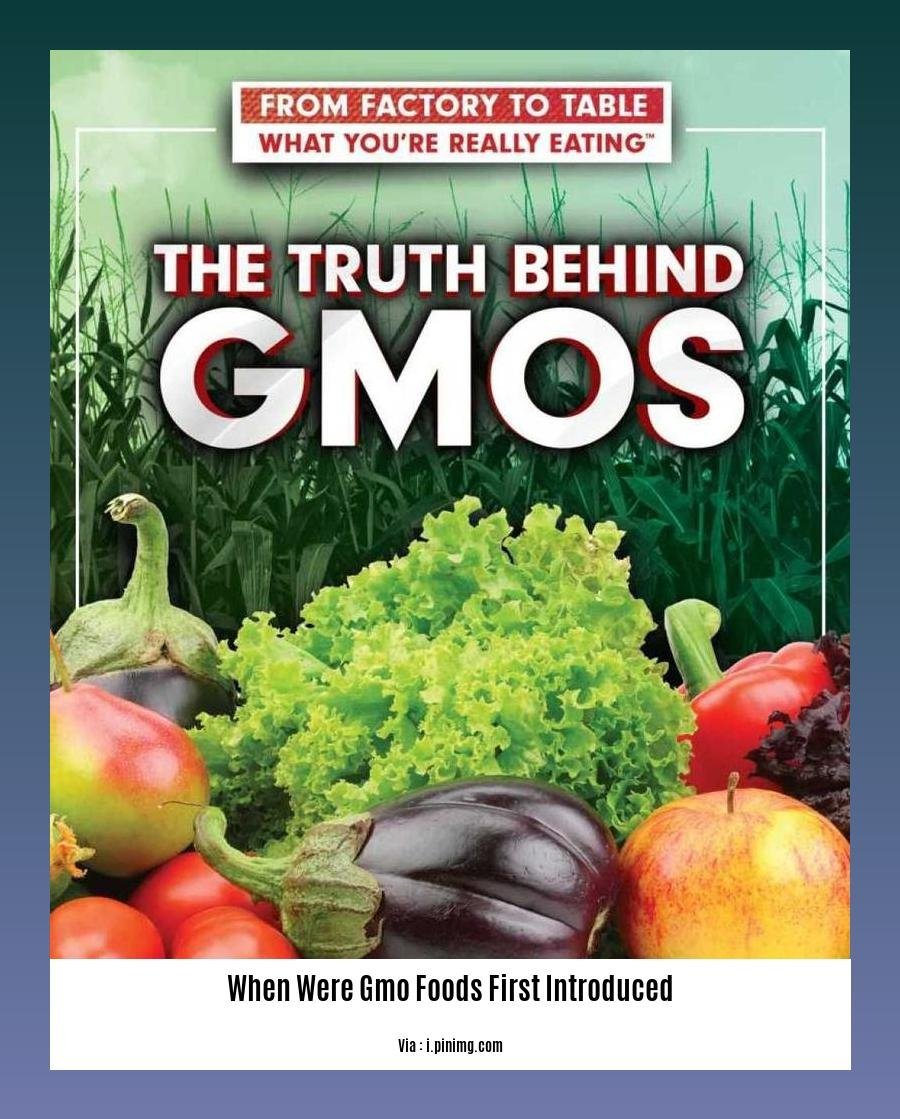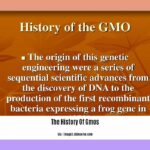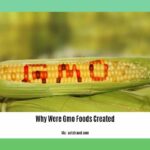When Were GMO Foods First Introduced: A Journey Through Historical Milestones: Dive into the fascinating story of genetically modified foods (GMOs) and their impact on the global food system. From their early origins in the laboratory to their widespread cultivation today, discover the journey of GMOs and the controversies that have shaped their development. Join us as we navigate the timeline of GMOs, exploring key moments, scientific advancements, and regulatory decisions that have brought us to where we are today.
Key Takeaways:
In 1994, the Flavr Savr tomato became the first approved GMO food for commercial release.
China introduced the first commercialized transgenic crop in 1993, a virus-resistant tobacco plant.
After safety evaluations, GMO tomatoes, engineered through genetic engineering, entered the market, proving to be as safe as traditional tomatoes.
By 2014–15, GM crops, including corn, cotton, and soybeans, accounted for about 90 percent of those planted in the United States.
When Were GMO Foods First Introduced
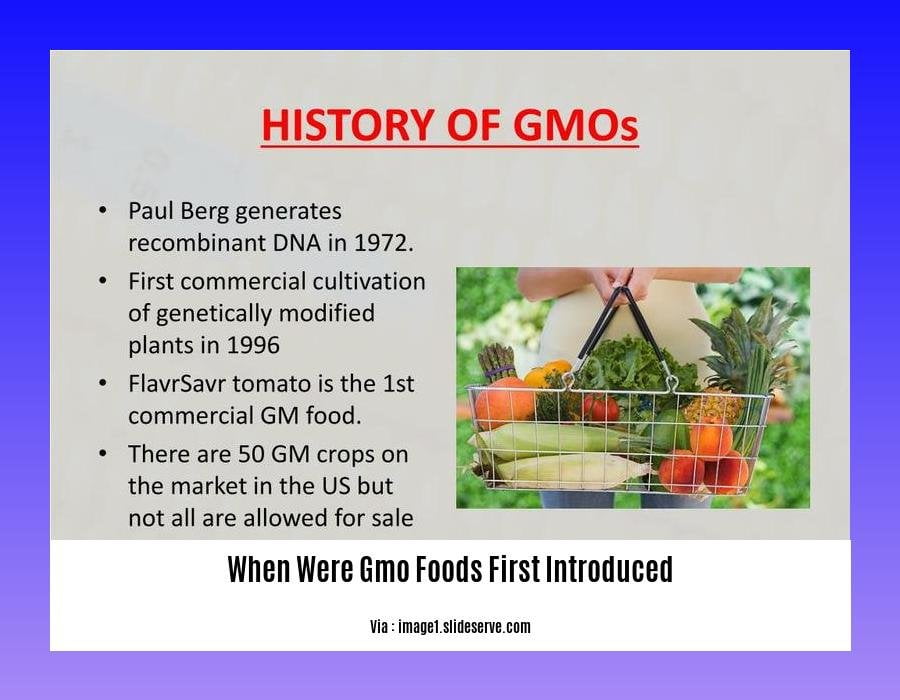
There’s no doubt that genetically modified foods, or GMOs, have sparked a lot of debate. While some hail them as a technological marvel with the potential to eradicate world hunger and address nutritional deficiencies, others raise concerns about their long-term effects on human health and the environment. But what exactly are GMOs, and when did they first enter our food system? Here’s a trip through history to find out.
The Pioneering Steps of GMO Creation
The roots of GMOs lie in the realm of genetic engineering, a technique that enables scientists to modify the genetic makeup of organisms, including plants and animals. These modifications aim to enhance certain traits, such as resistance to pests, herbicides, and diseases, or to improve nutritional content.
Regulatory Milestones and Market Impact
The regulatory landscape for GMOs has undergone significant evolution, with various agencies worldwide establishing guidelines for their approval. One of the most pivotal moments in GMO history was the approval of the Flavr Savr tomato in 1994 by the U.S. Food and Drug Administration (FDA). This marked the first time a genetically modified food was deemed safe for human consumption and paved the way for the commercialization of GMOs.
China, too, played a pioneering role in the GMO arena. In 1993, it became the first country to introduce a transgenic crop, a virus-resistant tobacco, into the market. This move underscored the growing global interest in harnessing genetic engineering for agricultural advancements.
Over the years, GMOs have gained significant traction in agriculture, particularly in the United States. By 2014–2015, an impressive 90 percent of corn, cotton, and soybeans grown in the U.S. were genetically modified. This widespread adoption highlights the potential of GMOs to increase crop yields, reduce the need for pesticides and herbicides, and address food security concerns.
Navigating the GMO Debate: Benefits, Concerns, and Beyond
As the presence of GMOs in our food system has expanded, so too has the debate surrounding their use. Here’s a closer look at the key points of contention:
Benefits:
- Increased crop productivity: GMOs can be engineered to withstand harsh environmental conditions, resist pests and diseases, and produce higher yields, contributing to global food security.
- Enhanced nutritional content: Genetic modifications can be employed to fortify crops with essential vitamins, minerals, and other nutrients, addressing malnutrition and dietary deficiencies.
- Reduced environmental impact: GMOs have the potential to reduce the use of chemical pesticides and herbicides, minimizing environmental pollution and promoting sustainable agriculture.
Concerns:
- Potential health risks: Some individuals raise concerns about the long-term health effects of consuming GMOs, including allergies, antibiotic resistance, and toxicity. However, extensive scientific studies have found no evidence to support these claims.
- Environmental risks: The introduction of GMOs into the environment may have unintended consequences, such as the development of resistant pests and the disruption of natural ecosystems.
- Gene transfer and intellectual property: The patenting of GMOs and the potential for gene transfer between modified crops and wild relatives raise questions about intellectual property rights, market consolidation, and the preservation of biodiversity.
The debate surrounding GMOs is complex and ongoing, with ongoing research and discussions aimed at addressing concerns and ensuring the safe and responsible use of this technology.
- To learn more about how the development of GMOs came to be and how they have impacted our world thus far, click on the history of GMOs.
- GMOs: A hot topic in debates about food safety, environmental impact, and ethical issues. Delve into the history of GMOs here to understand their origin, evolution, and the controversies surrounding them.
- GMOs, a product of scientific advancement, were created to address global food security and meet the demands of a growing population. Discover why GMO foods were created and how they aimed to revolutionize agriculture.
- The world of GMOs began with a humble start. Discover what the first GMO was and its significance in shaping the future of genetically modified organisms.
- GMOs, a result of scientific innovation, were invented with specific purposes in mind. Explore why GMOs were invented, the challenges they were meant to address, and the potential they hold for addressing global food needs.
Introduction of GMO foods into the global food system
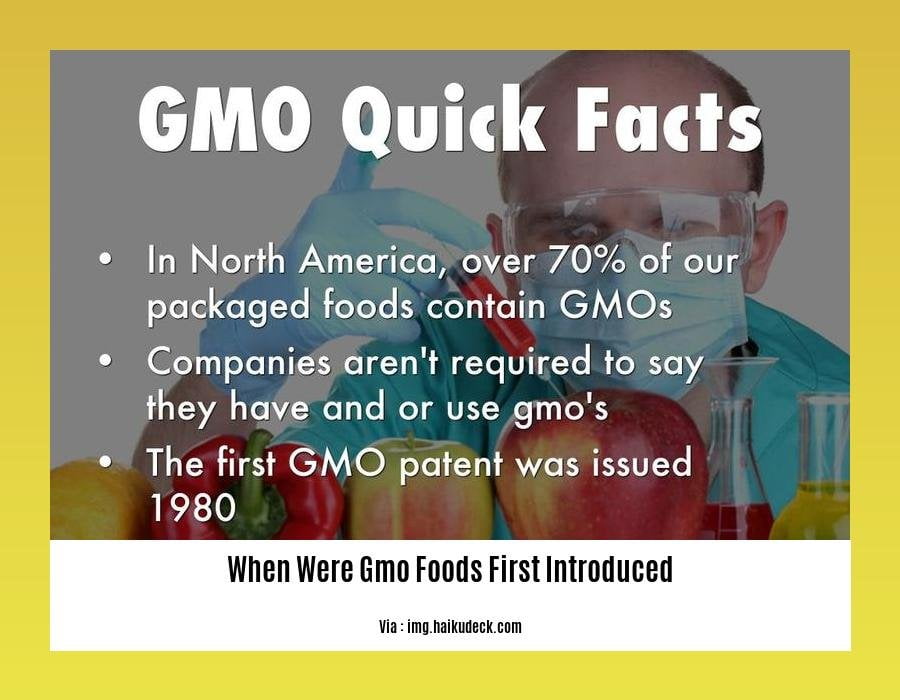
GMOs are genetically altered foods with modified genetic material that don’t occur naturally. So when did this modification meet our plates?
Timeline of GMO journey:
1983: The world’s first genetically modified (GM) plant was born, a tobacco plant with enhanced antibiotic resistance.
1988: GM microbial enzymes, the first GMOs used in food production, received the US FDA’s nod of approval.
1994: The Flavr Savr tomato, the first commercial GM food, hit the U.S. market, promising longer shelf life.
1995: China introduced its first transgenic tobacco crop, joining the GM party.
2009: India entered the GM club, cultivating Bt cotton, a pest-resistant variety.
2010: The first GM animal, a salmon engineered for faster growth, was created but never entered the market.
Key Takeaways:
- GMOs have been around since the 1980s and are used in various crops and food products.
- GMOs have been approved for consumption in many countries, but their adoption and acceptance vary.
- Concerns about GMOs include potential health and environmental risks, as well as ethical and intellectual property issues.
- The debate over GMOs continues, with ongoing research and discussions aimed at ensuring their safe and responsible use.
Sources:
- Genetically modified foods
- Genetically Modified Crops: Questions and Answers
Controversies and debates surrounding GMOs
Let’s take a moment to explore the controversies, debates, and concerns that have intertwined with the advent of GMOs.
Key Takeaways:
Safety debates dance around the purported link between GMO consumption and potential health issues like allergies, toxicity, or long-term health risks.
Environmental concerns revolve around the potential of GMOs to transfer genes to wild populations, disrupt ecological balance, or contribute to resistance development in weeds and pests.
Regulatory oversight and labeling regulations are at the forefront of discussions regarding transparency, consumer choice, and risk mitigation.
Economic and sociopolitical aspects, such as intellectual property rights, seed monopolies, and farmer dependency on GMOs, also add complexity to public sentiments.
Ongoing research and dialogue strive to unravel these complexities, assess the interplay between benefits and risks, and contribute to an informed understanding of GMOs in our food systems.
Citation:
- National Institute of Health: Genetically Modified (GM) Foods and Organisms
- Public Perception and Genetically Modified (GM) Food: A Literature Review
Current status and future prospects of GMO foods
Hey there, food enthusiasts and curious minds! Are you ready to dive into the fascinating world of Genetically Modified Organisms (GMOs) in the context of food production? Let’s embark on a journey through the annals of history to understand when GMOs first entered our global food system.
Key Takeaways:
The development and adoption of GMO foods have transformed modern agriculture and hold immense potential for addressing global food security challenges in the face of rising populations and changing climatic conditions.
Despite significant advancements and proven benefits, controversies and debates surrounding GMOs continue to influence public opinion and regulatory frameworks.
Ongoing research and technological innovations aim to enhance the precision and safety of genetic modifications, promising to unlock new possibilities for sustainable and nutritious food production.
A Journey Through Historical Milestones of GMOs:
The story of GMOs begins in the 1970s, when scientists unlocked the ability to transfer genetic material between different organisms. This breakthrough paved the way for the development of the first genetically modified plant, a tobacco plant resistant to a specific antibiotic, in 1983.
In 1994, the United States became the first country to approve a genetically modified food for commercial sale – the Flavr Savr tomato, which had a longer shelf life. This marked a significant milestone in the history of GMOs, opening the door for the introduction of a wide range of genetically modified crops.
Current status of GMO foods
Today, GMOs are an integral part of global agriculture, with over 200 million hectares of genetically modified crops cultivated worldwide. Major crops like soybeans, corn, and cotton are predominantly genetically modified, contributing significantly to increased agricultural productivity and food security.
Future Prospects of GMO foods
Looking ahead, the future of GMOs holds immense promise:
– Gene editing techniques, like CRISPR-Cas9, offer greater precision and control in genetic modifications. By targeting specific genes, scientists can develop crops with enhanced traits, such as resistance to pests, diseases, and environmental stresses, without introducing foreign genes.
Genetically modified crops can be tailored to specific nutritional needs, addressing malnutrition and deficiencies in various regions.
Innovative approaches, like “gene stacking,” combine multiple desirable traits into a single crop, resulting in plants that are more resilient, productive, and nutritious.
Addressing Concerns and Controversies
While GMOs offer numerous benefits, concerns and controversies have also arisen:
– Public perception and acceptance of GMOs vary widely across different regions and countries. Concerns about potential health risks, environmental impact, and gene transfer to wild populations have fueled debates and protests.
- Regulatory frameworks for GMOs differ among countries, leading to a patchwork of regulations that can hinder the global trade and distribution of genetically modified foods.
Conclusion
The journey of GMO foods continues to unfold, with ongoing research, technological advancements, and regulatory discussions shaping their future. Balancing the potential benefits of increased food production, sustainability, and nutrition with addressing concerns and ensuring safety remains a critical challenge. The path forward lies in fostering transparent communication, rigorous scientific assessments, and responsible use of GMOs to create a sustainable and equitable food system for the future.
Citations:
- Current Status and Future Prospects of Genetically Modified Food: A Review
- Genetically Modified Foods: A Critical Review
FAQ
Q1: What year did GMOs first enter the global food system?
A1: Genetically modified foods (GMOs) initially entered the global food system in 1994 with the introduction of the Flavr Savr tomato. However, China had already commercialized a transgenic crop in 1993 with the introduction of virus-resistant tobacco.
Q2: Which country was the first to introduce GMOs into its food production?
A2: China holds the distinction of being the first country to introduce GMOs into its food production in 1993 with the commercialization of transgenic virus-resistant tobacco.
Q3: How did GMOs gain regulatory approval for consumption?
A3: GMOs underwent rigorous safety assessments by regulatory authorities in various countries before gaining approval for consumption. In the United States, the Food and Drug Administration (FDA) evaluated studies that proved GMO tomatoes to be as safe as traditionally bred tomatoes, leading to their availability for sale in 1994.
Q4: What were the initial applications of GMOs in food production?
A4: The earliest applications of GMOs in food production primarily involved microbial enzymes. These genetically modified enzymes were approved for use in 1988 by the US Food and Drug Administration.
Q5: What was the extent of GMO cultivation in the United States by 2014-15?
A5: By 2014-15, GMO crops had become widely adopted in the United States, with approximately 90% of corn, cotton, and soybeans being genetically modified.
